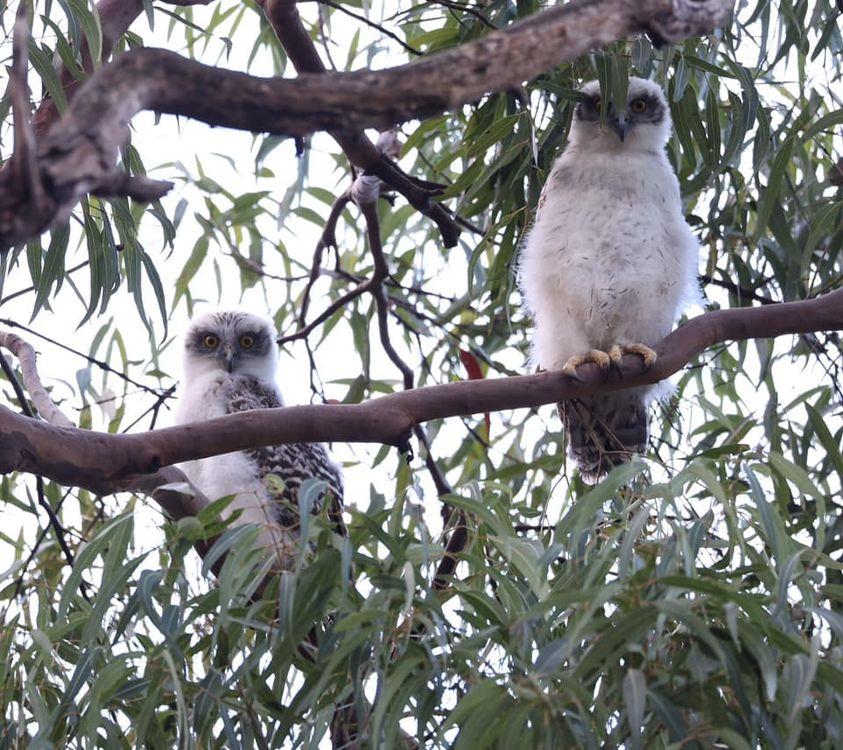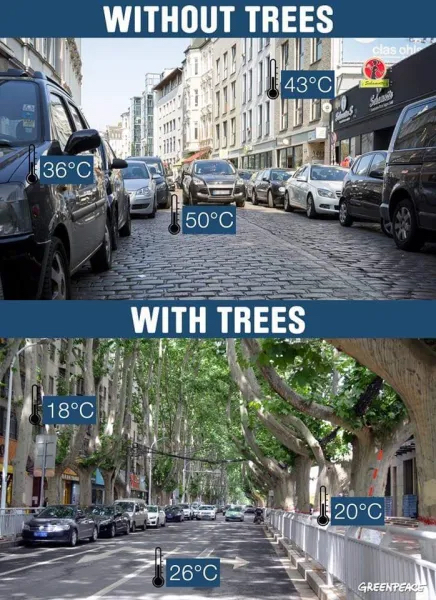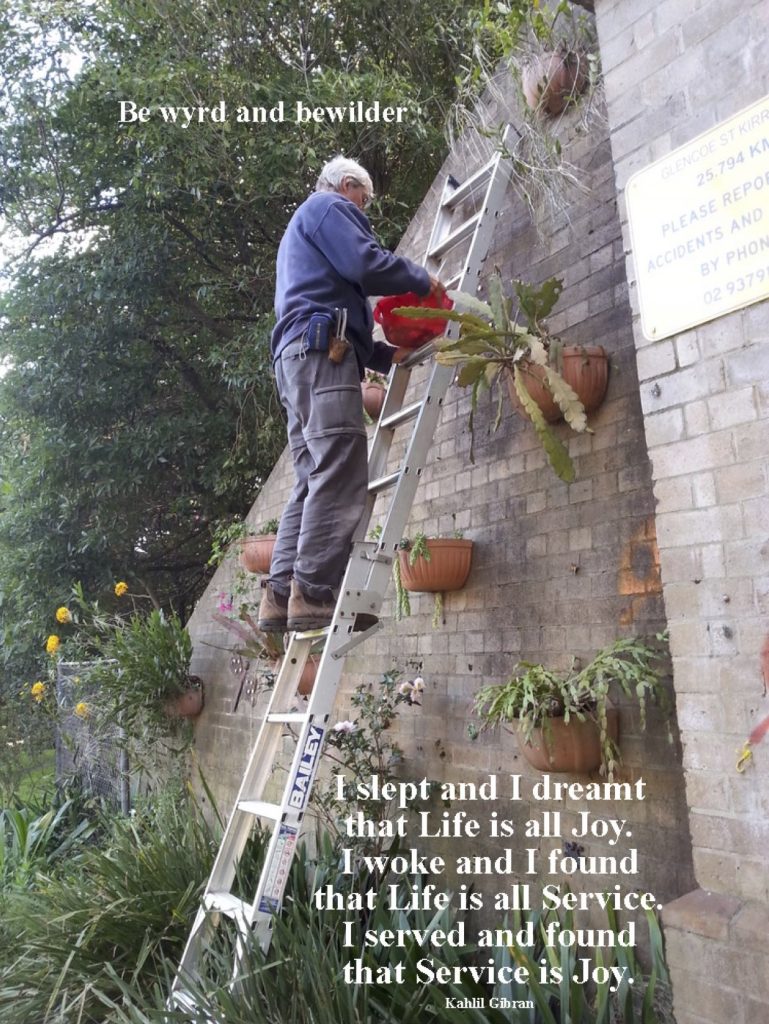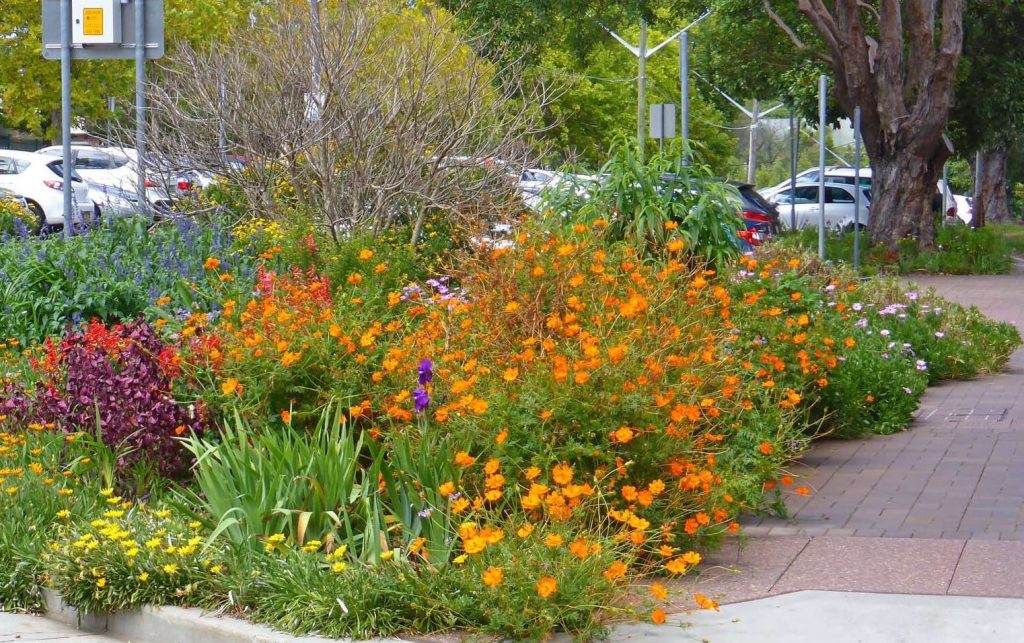Sutherland Shire has some extraordinarily beautiful natural areas, but our tree canopy is declining at a rapid rate. If you care about trees and want to protect the Shire’s leafy green canopy please put a submission in to Council’s draft Tree and Bushland Strategy. The deadline is Wednesday, 18 September 2024.
The email to send submissions to Council directly is EnvScience@ssc.nsw.gov.au. This should be addressed to the Environmental Science Unit, with Draft Tree and Bushland Strategy noted as the subject.
We’ve included more information about the threats to our trees on this page, and how the current draft strategy fails to adequately address these. Please feel free to draw on this information when making your own submission.
Where we are now – canopy cover data
- – the draft Strategy notes that between 2016 to 2020, 68.1 hectares of tree canopy was cut down across the Shire.
– the Strategy states that in 2020 Sutherland Shire only had 24.7% canopy cover in urban areas. - – we have no data for 2020-24 period, but Council staff estimated the 2021 Urban Tree and Bushland Policy would result in an additional 250+ trees being lost each year, on top of the 2016-20 pattern of decline.
- – it’s likely that many more hectares of trees have been cut down since 2020.
Future canopy cover targets
The State government has set a target of 40% canopy cover across residential areas, and this is included as a key aim in Council’s draft Strategy. But no date has been set for this target to be reached, or what steps Council needs to take to get there.
The draft Strategy only proposes increasing tree cover in urban areas beyond the 2020 benchmark by 2034 (see p.6). This target is very weak, and it will do nothing to recover the significant amount of canopy lost over the last few years.
A Strategy needs to do more than make vague claims about what will be achieved decades in the future. The vision statement should be inspiring.

Saplings take years to grow to maturity – a proactive forward planning planting schedule to meet stronger targets is vitally important. While Council’s “Vision” of caring for canopy sounds positive, as do statements about canopy supporting “a rich diversity of life and living things”, the phrase “support and maintain” in the “Vision” does not indicate that increasing canopy cover is a priority. The aim to implement best practice management by 2050 is, quite frankly, visionless.
Georges River Council has a Tree Policy that aims for 40% by 2038. Why should Sutherland Council be less ambitious? Let’s aim for an increase in canopy cover to 40% by at least 2034-8, state this explicitly in the Strategy, and back it up with quality operational plans.
This draft Strategy will be in place until 2034, so it’s vital to get the details right to make sure our beautiful parks and mature canopy trees are protected.
Performance measures, transparency, funding and accountability
Key aspects of this Strategy are not funded, including “standardised operational procedures for assessment, planting, establishment, maintenance, and management” (see p.45). Actions in the implementation plan such as “Monitor canopy change” and “Monitor tree removals and replacements” are not funded.
To ensure this Strategy is not just empty rhetoric, quantifiable performance measures should be added detailing how the 40% canopy cover increase will be achieved. Timeframes for actions to be implemented should be included, and how outcomes will be reported, and how often.
Currently tree and bushland care and maintenance is spread across a number of areas of Council, in addition to Natural Area Management. There needs to be more transparency as to exactly where all funding is directed, what is given priority, and what isn’t.
How much does Council spend on managing / removing trees on public land? This information is hard to find. Yet it costs money to chop down old trees, and lots of money to plant new saplings. What goes into the maintenance and care of natural bushland? What money is Council putting into playgrounds / play equipment rather than bush and parkland used for passive enjoyment?
Over the last few years Council has cut down swathes of mature canopy trees around public recreational areas.
Sutherland Pool infamously lost over 65 mature trees, replaced with a heat sink carpark and 23 saplings. Other trees were lost at Shaw Seymour Park, Miranda. Now similar plans are proposed for other park areas, including Oyster Bay Oval, a potential loss of 74 beautiful mature trees that have enhanced the area for decades.
Recently Liberal Councillors tried to put up an amendment to the Development Control Plan (DCP) allowing trees to be cut down within 3m of proposed properties and pools. These Councillors subsequently set aside the results of a formal community consultation where 91% of people opposed the proposal. They stalled with an old delaying tactic, calling for yet another council report on the issue. Will they try to push this through in the next term of Council?
We need to tell them no again. This DCP amendment must be rejected. It acts directly against the Principals and Vision of the draft Tree and Bushland Strategy, even as weak as it currently is. Councillors should not be facilitating, or encouraging the removal of trees.
With the target to increase canopy to 40%, removing trees should be a last resort. Trees should be cared for to ensure they are healthy, along with new saplings that are planted. Council should reinstate tree removal permits as development applications, as is currently the case with Georges River Council.
Another concerning motion supported by Liberal councillors last month proposed that land zoned C3 / C4 Environmental Protection and Conservation be changed to R2 Residential – if this rezoning proceeds significant canopy loss is likely to occur.
Biodiversity
If we continue on the current trajectory it will be impossible to increase our canopy cover from 24.7% to 40%.
Another point of concern in the draft Strategy are statements about trees having a ‘use by date’. This should not be used as an alibi to enable an active program focused on cutting down healthy trees.
Large canopy trees provide critical habitat even in urban environments: old hollows can take 150-200 years to form. The larger hollows birds such as powerful owls require can take 300 years. Destroying living or dead hollow-bearing trees displaces or kills wildlife dependent on those hollows.
The data in Council’s current Biodiversity Policy is now 30 years old. The draft Strategy notes that there are “86 Critically Endangered, Endangered, Vulnerable and Near Threatened species identified as occurring in the Sutherland Shire.”(see p.24) An updated Biodiversity Policy must be prepared as soon as possible, and incorporated in the Tree and Bushland Strategy. Saplings cannot be regarded as a replacement for the habitat mature canopy provides.
Retaining trees on site rather than replanting saplings elsewhere is essential to maintaining canopy in residential zones subject to increased density. It needs to be made clear in the new Strategy how this will be managed, and what funding allocations will be given to tree removal v’s care.
The creation of a “Significant Tree Register”, in line with many other Australian Councils, would allow residents to identify trees of significant community value, and aid in their protection.
Challenges
Sutherland Shire’s population is expected to increase 9% by 2036. With the increased density it is vital that proactive ways of increasing tree canopy are incorporated in Council’s plans.
Mature trees require sufficient floor space between dwellings to grow. Deep soil zones with a minimum dimension of 3m are required for the healthy growth of new trees, and the retention of existing trees. The State government’s Apartment Design Guide describes how large trees with large canopies require “deep soil zones”, areas of soil not covered by buildings or structures within a development. These zones have ‘important environmental benefits’, and need to be identified in order to retain existing significant trees, improve amenity, and local microclimates. Council should incorporate such spacing within the new LEP.
The draft Strategy states that Council will adopt the NSW Government’s “Greener Neighbourhood Guide”, which in turn states that goals and targets “should be ambitious but achievable and based on evidence to gauge if the goals are feasible for the resources of the organisation.” As noted above, it is not apparent that adequate resourcing is being provided to meet any targets. The Sutherland Shire Council case study in the “Greener Neighbourhood Guide” identifies “a lack of resourcing as the number one problem with its ability to implement no net loss of canopy cover.”
Another issue flagged in the case study is the need for better communication between Council and agencies such as Ausgrid and Transport NSW to ensure they do not compromise Council’s target of “no net canopy loss”. Council should take part in Ausgrid’s new Aerial bundled cable program. This requires less pruning compared to exposed wires that need up to 3 metres of clearance.
Council should continue opposing proposals from Transport NSW to cut down mature canopy trees as part of Transport NSW’s decision to reroute the Sutherland to Cronulla Active Transport Link away from the rail corridor.
Ideally, reports should be provided to Council on an ongoing basis about what actions these agencies are taking to mitigate impacts on Sutherland Shire canopy.
Community Consultation
The Strategy states that there should be “Open communication mechanisms… in place for tree and bushland management matters” (see p.37). Sutherland Shire Environment Centre thanks Council for including us in stakeholder consultations in June last year. But open communication mechanisms have not been evident in Council decisions regarding trees more generally. There are no community representatives on Council’s Environment and Sustainability sub-committee. Residents are not permitted to attend these meetings. For there to be transparency around Council tree-related decisions this should change.
Another issue is that decisions to remove healthy street trees are currently being made by Council staff at the request of individual residents behind closed doors. This is not raised in the draft Strategy, but under Council’s current policy there is no requirement to inform anyone apart from immediately adjacent neighbours prior to decisions to remove healthy street trees. Street trees belong to a whole community, yet we now have a situation where any Shire resident could wake up one morning to find street trees they love near their property being removed, with no notification whatsoever. Residents have been asked to put in freedom of information GIPA requests to find out the reason why.
Healthy trees should not be removed without informing others in the street just because one person complains. Wider community consultation is vital.
Other points: public education, vandalism, climate change, property values
Council should be aiming to protect mature canopy trees, and develop a positive public education campaign. Language matters. Using phrases such as “Which Plant Where” (see Ku-ring-gai Council), instead of “Right Tree, Right Place” is far less inflammatory, and far less likely to whip up groundless fears. (“Right tree” invariably suggests the notion of “wrong trees”). Ku-ring-gai also has an “Urban Forest Policy“. Willoughby Council has a “Green City Plan“. If Sutherland Council genuinely wishes to increase our canopy let’s use language which promotes this aim.
Studies have shown house prices go up in streets with trees. It’d be good to note this in the Strategy itself, and as part of a public education campaign.
There should be real deterrents for cases of tree poisoning. The signs that went up at Lilli Pilli Point recently were good, but these could be bigger. Shipping containers are another option being successfully used by Bayside Council. Signs, banners and other deterrents should always remain in place until the trees have grown back.
The need for canopy trees must also be incorporated in Council’s upcoming Climate Change policy. Planting trees is one of the simplest ways of tackling climate change. Mature trees sequester carbon and reduce the urban heat island effect by producing shade that prevents the absorption and reflection of heat by hard surfaces such as footpaths, roads and buildings.
Speak up for our trees
The Shire used to be known as God’s country and the beautiful tree canopy here was part of that. Will enough people realise we need take action to prevent the loss of what we love? The draft Strategy is about 50 pages long. Hopefully this overview will be useful if you make a submission. The deadline is Wednesday 18 September 2024.
You can view the draft Policy on Council’s Join the Conversation Page: https://jointheconversation.sutherlandshire.nsw.gov.au/tree-and-bushland-strategy-2024-2034
To put in a submission either 1. write to Council directly, or 2. fill in their survey –
1. write to Council – Draft Tree and Bushland Strategy, Environmental Science Unit
– by email – EnvScience@ssc.nsw.gov.au
– or mail directly to Locked Bag 17, Sutherland NSW 1499
2. fill in the survey on the Join the Conversation page. If you choose to do the survey, much of this is fairly generic, there is a heavy focus on “feeling”, with emoji responses, and vague questions, where positive / less positive options are mixed together. So be careful how you respond.
There’s not much opportunity to write critical feedback on the survey either, so please make the most of the space that is given. There are four text boxes in the Survey (if you include the “other” option of Q7), and these are points which allow longer responses.
Writing directly to Council will avoid any mixed messages, and this is a good option if you want to include more detail. It helps to personalise your letter, and let them know how and why you value our trees and want to make sure they are protected.
Whether you choose to do the survey or write to Council directly, this is an opportunity to let Council and Councillors know exactly what you think.

For further information or if you have any questions please contact office@ssec.org.au
______________________
Verge gardens and bewildering
Bewildering is about creating beauty with vegetation, supporting biodiversity, establishing habitat for native species, and improving the quality of life we live.
Bewildering is a very deep human response to our relationship to our world especially our immediate environment that recognises our place in it, our dependence upon it, and our responsibility to it. It’s more than a charming term; it is a term for charming. It is not just such things as planting trees, greening, cuddling koalas and saving whales.
One Bewildering initiative has involved our advocacy for verge gardens across the Shire. We’d been discussing the need for formal Verge Gardens Guidelines with Sutherland Council for several years, and are so pleased Council now has a Verge Garden Policy in place.
Thanks in particular to Sutherland Shire Councillor Diedree Steinwall for first supporting this new Policy. She put forward a motion in 2022 calling for Council staff to produce a report assessing issues and identifying a framework to develop a verge garden program, with clearer and more transparent information available to the community.
Council now allows the planting of low-growing (less than 0.5m), soft foliage plants. Residents will need to obtain written approval prior to work being carried out, and make sure that –
– adequate space for bin collections is provided
– there will be no obstructions to sight lines of vehicles exiting driveways
– and utility pit lids are visible and accessible.
Hard objects such as stakes, logs, sleepers, river pebbles, stones, pots, statues and rocks are not permitted in footways. Council can also ask for any inappropriate plant or work to be removed.
For more information and to apply online see – https://www.sutherlandshire.nsw.gov.au/living-here/roads,-traffic-and-parking/verge-gardens
For further information please contact: office@ssec.org.au
______________________


















